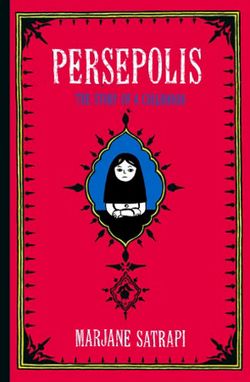Comics /
European Comics
Marjane Satrapi's Persepolis: The Story of a Childhood
By Leroy Douresseaux
October 23, 2006 - 05:12
Although its American edition is two years old, Persepolis is worthy of continuous discussion. Cartoonist Marjane Satrapi tells the story of her childhood, growing up in late 70's and early 80's Iran, under the oppressive regime of the Shah (Part 1), and, then, the perilous existence during years of the Islamic Revolution and the Iran/Iraq War (Part 2). For the U.S. edition, Pantheon combined Parts 1 and 2 into Persepolis: The Story of a Childhood (The American edition Persepolis 2 combines Parts 3 and 4). L'Association, the French publishing house, originally published Persepolis in French, and Satrapi's husband, Mattias Ripa, translated Part 1 into English with Blake Ferris translating Part 2.
Satrapi's narrative is a mixture of several ingredients that enrich her story. She blends the history of Iran ( Persepolis was an ancient ceremonial capitol of Persia, now known as Iran) with her family's history. She places her ambitions next to those of her parents, and her view of religion and faith often clashes with theirs. Parts of her story are a document of the world in which she lives, and much of the story is also internal and separate from an outside reality. Satrapi makes Iran's recent history engaging by putting human faces on it, and makes her fictional self more interesting and a fuller character by putting herself in the context of larger events.
Satrapi draws in a simple, flexible, pliable line, and uses blocks of black to create simple forms and recognizable shapes. This makes for an uncomplicated, but universal comics language. Comparable to Maus, Persepolis is an excellent comic book that reveals the diversity and breath of comics storytelling. If only the real powers-in-charge of big American comics publishing attempted works like Persepolis.
Rating: 10 /10
Last Updated: January 17, 2025 - 08:20
